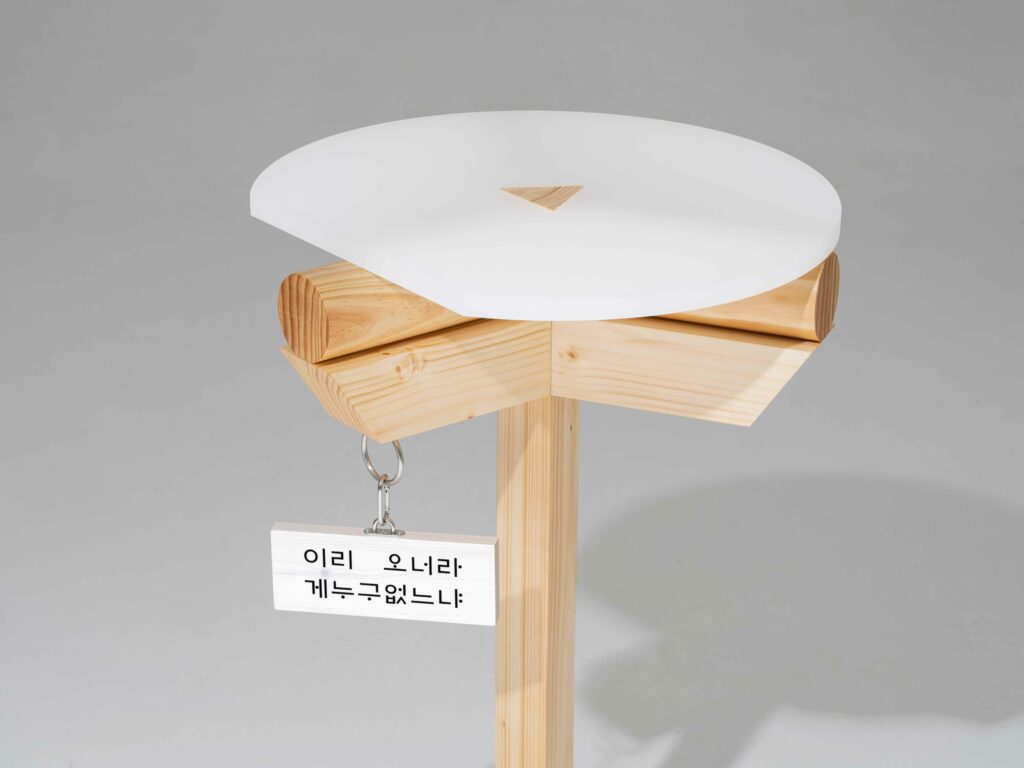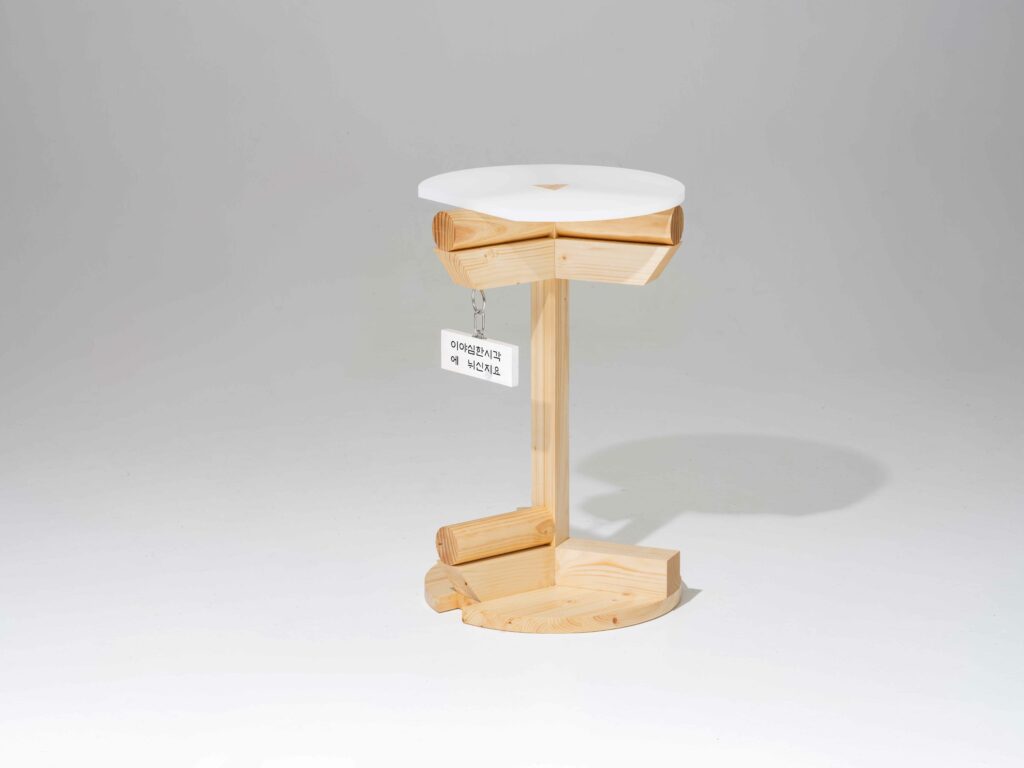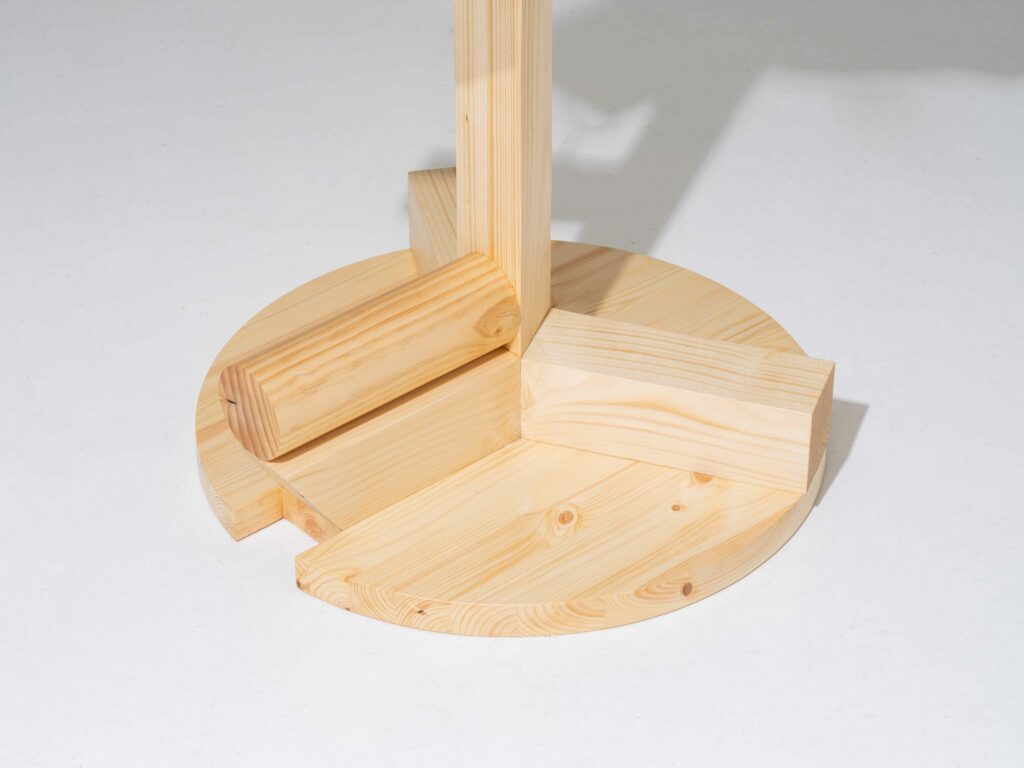Header: Park Yoon
When trying to create a piece that represents the designer’s own experiences and tastes, the world is introduced to an almost personification of a furniture piece. Contemporary people actively explore and consume new cultures and exert influence by actively self-presenting in reality and in virtual about what kind of people, what spaces, and what experiences they have. In this way, through Korean design archetypes, ‘ILLIOWNERAA'(이리오너라) designed by JEON SANG IL (HERITAGE OF SANG IL), seeks to spread positive Self-presentation Memetic Experience.

Designer JEON SANG IL admits to having a big heart when it comes to his favourite examples of Korean design, being completely transparent when letting us know where he took inspiration from. In the words of the designer, a vision came “from classics such as Gwanghwamun, Geunjeongjeon of Gyeongbokgung Palace, Bulguksa Temple, Gwannyongsa Temple in Changnyeong, Myeongnyundang of Sungkyunkwan, and Anui Gwangpungru in Hamyang to neighbourhood apartments and pavilions on the promenade.”
“I used to take pictures whenever I came across the beauty of Korean design.”
JEON SANG IL (HERITAGE OF SANG IL)
We can say, then, that the stool is not only entirely functional but also aesthetically pleasing, as the designer stays true to himself by giving us their interpretation of traditional Korean design principles.

The main material of the stool is light-coloured wood that retains its natural patterns, further enhancing the simple nature of the Korean design style. On the top, an acrylic circular surface provides a smooth contrast to the hard wood, giving the piece a modern look amid an array of Korean historical references.
Taking from the various elements of Korean architecture, such as roofs, cornerstones, eaves, and pillars, the designer felt that a true representation of traditional Korean design could only be calm and suave. JEON SANG IL (HERITAGE OF SANG IL) believes that the design they see all over their country invites people to meditate, which is quite a different from other louder styles of architecture.

In this sense, the designee wanted the stool to be in harmony with its surroundings. The chosen design is suitable for any space due to its simplicity, minimalism, and balance, completely in sync with the “not much” philosophy seen all over Korea – each part of the stool serves its function and not much more.
Perhaps the only ornament found on this stool is a hanging wooden tag where someone who can speak Korean could read “Come here Guesthouse” and “Come to Jeju Island.” This particular element is enough to feed our curiosity, even making us visit the country that the designers clearly love so much.
The base is quite different from other stools, as it looks like it has multiple levels that seamlessly maintain the piece’s stability. This design was inspired by the design elements of traditional Korean architecture, and one can notice its resemblance to the edges, rooftops, and even pillars natural to any Korean house.

Photo credit: Park Yoon








![Hi Sophia, I hope you're doing well! I wanted to let you know that we've just published the article on Andreu World's exciting showroom expansion at THE MART. You can check it out here: [Link to article]. As we’ve published several of Novità PR’s articles this year, it would be fantastic to feature a quote from your team in our media kit. It could highlight how working with us has benefited your clients, the exposure they’ve received, or how we’ve helped amplify their stories to the design community. This would be a great addition to showcase the ongoing collaboration between us and the incredible brands you represent. Looking forward to your thoughts, and happy to brainstorm if needed! Best regards, Mirna](https://d5mag.com/wp-content/uploads/2024/10/andreu_world_chicago_showroom_5-380x250.jpeg)

